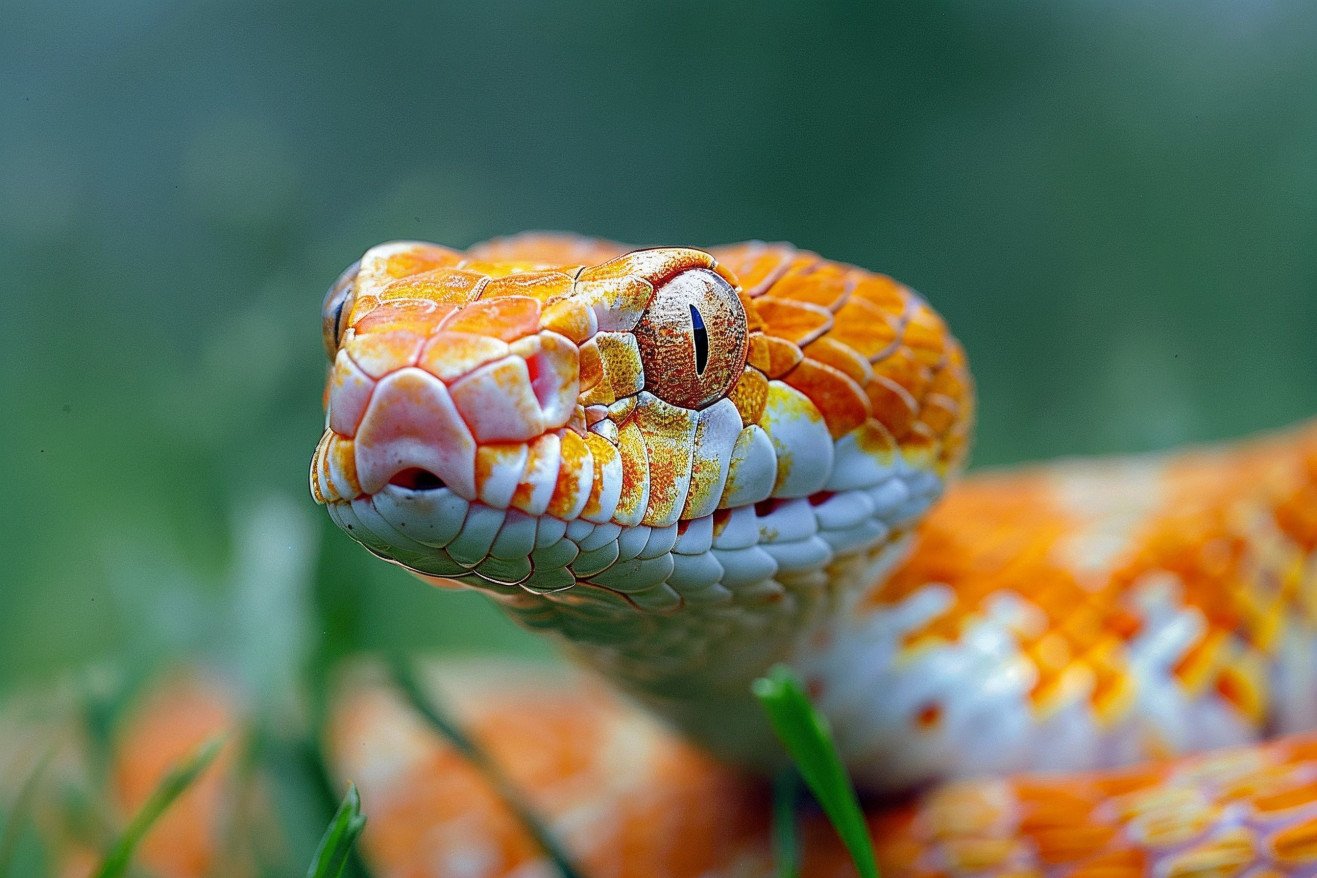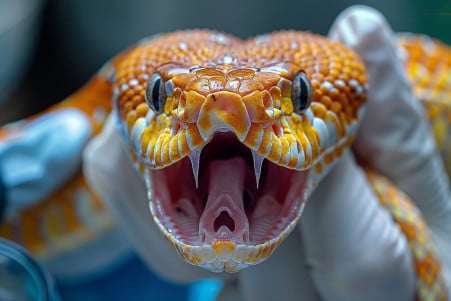The Teeth of Corn Snakes: An Evolutionary Marvel
2 May 2024 • Updated 1 May 2024

These nonvenomous constrictors may look harmless, but what you should know about a corn snake's teeth might surprise you. Corn snakes do have teeth - lots of them! Their mouths contain four rows of tiny, razor-sharp teeth used for grabbing and constricting prey. The teeth curve inward to prevent escape, eventually suffocating the prey before the snake swallows it whole. While their bites rarely break human skin, their teeth are definitely not to be underestimated.
To fully understand this intriguing aspect of corn snake anatomy and behavior, we'll examine detailed scientific research from the fields of herpetology and evolutionary biology. This deep dive will shed light on the purpose, structure, and evolution of these reptilian teeth, as well as provide insight into corn snake feeding habits in captivity versus the wild. By the end, you'll have a newfound appreciation for the oral weaponry of these beloved pet snakes.
Do corn snakes have teeth?
The Teeth of Corn Snakes
Corn snakes are equipped with a large number of small, recurved teeth in both the upper and lower jaws, according to ReptileKingdoms. These teeth are angled inward toward the back of the mouth and help the snake hold onto its prey while it constricts and swallows it. Corn snakes are part of the aglyphous group, which means their teeth are solid and lack the grooves that are found in the specialized venom-delivering fangs of some venomous snakes.
As noted in the ScienceDirect overview, corn snakes are members of the order Squamata, which is known for having highly kinetic skulls that enable them to swallow large prey whole. The aglyphous nature of their teeth is an example of an evolutionary trade-off in which venomous constriction replaced venom delivery as a method of prey immobilization. Reptiles Magazine explains that while snake teeth are used for holding prey and not chewing, the number and arrangement of their teeth can vary widely between species in response to their dietary requirements.
Feeding Behaviors and the Role of Teeth
Corn snakes are carnivorous predators that primarily eat small rodents such as mice, according to the ReptiFiles care guide. Their many small, curved teeth are important for this feeding behavior. The teeth are angled backward to help the snake hold onto its prey while it constricts it. This is important because constriction is what eventually kills the prey by suffocating it.
In captivity, corn snakes are often fed frozen-thawed rodents. To help the snake feel like it's hunting in the wild, the frozen rodent is thawed and warmed to body temperature, according to the ReptiFiles guide. The rodent is then wiggled in front of the snake to encourage it to strike and coil around it. The snake's teeth then help it hold onto the rodent until it can swallow it whole.
ReptileKingdoms notes that snake teeth, including those of corn snakes, are primarily used for grasping rather than chewing. The specific shape and arrangement of corn snake teeth are an evolutionary development that helps them hunt and eat effectively, especially as they have evolved from venomous to non-venomous constrictors.
Evolutionary History and Venomous Ancestors
Corn snakes are thought to have evolved from venomous snake ancestors that lost their venomous traits. As noted by Life is short, but snakes are long: Basics of Snake Fangs, the teeth of corn snakes are similar to the more primitive opisthoglyphous fangs of rear-fanged snakes, and the vestigial venom glands in corn snakes are further evidence of their venomous ancestry.
This evolutionary change is seen in the corn snake's current aglyphous dentition, where their teeth are solid and ungrooved, in contrast to the specialized venom-injecting fangs of venomous snakes. As explained in Reptile Dentition: The Details on Reptile Teeth - Reptiles Magazine, this change allowed corn snakes to evolve the ability to constrict their prey, instead of relying on venom to subdue it.
Tooth Development and Replacement in Corn Snakes
Corn snakes are polyphyodonts, meaning they replace their teeth continuously throughout their lives. In the gecko Paroedura picta, tooth development begins with the formation of small, non-functional 'null generation' teeth as embryos, which are then replaced by the first functional dentition that forms deeper in the jaws Tooth development in a model reptile: functional and null generation teeth in the gecko Paroedura picta - PMC.
In corn snakes, as outlined in Getting out of an egg: Merging of tooth germs to create an egg tooth in the snake - Fons - 2020 - Developmental Dynamics - Wiley Online Library, the single large egg tooth present in newborn corn snakes is created by the merging of two tooth germs, allowing it to be much larger than the rest of the dentition. After this, successional teeth replace the functional teeth in a continuous cycle that is controlled by specific genetic pathways.
Initiation and patterning of the snake dentition are dependent on Sonic Hedgehog signaling - ScienceDirect showed that Sonic hedgehog expression is responsible for determining the position of the dental lamina and controlling the depth of tooth formation in snakes. Meanwhile, Organized Emergence of Multiple-Generations of Teeth in Snakes Is Dysregulated by Activation of Wnt/Beta-Catenin Signalling - PMC demonstrated that the transcription factor Lef1 is highly expressed in the successional lamina, leading to continuous generations of new teeth in polyphyodont reptiles like corn snakes.
Conclusion: Understanding Corn Snake Teeth
Corn snakes are thought to have descended from venomous snake ancestors, but lost their venomous capabilities. As Life is short, but snakes are long: Basics of Snake Fangs explains, the dentition of corn snakes is similar to the more primitive opisthoglyphous fangs of rear-fanged snakes. In addition, the presence of vestigial venom glands in corn snakes is evidence of their venomous ancestry.
This change in evolutionary direction is evident in the corn snake's current aglyphous dentition, which is solid and ungrooved, unlike the hollow, grooved fangs of venomous snakes. As explained in Reptile Dentition: The Details on Reptile Teeth - Reptiles Magazine, this change in dentition allowed corn snakes to evolve the ability to constrict their prey, rather than relying on venom to subdue their victims.
This information can also help you take care of these popular pet reptiles. Learning about corn snake teeth can also help you appreciate the amazing biology of these animals.


